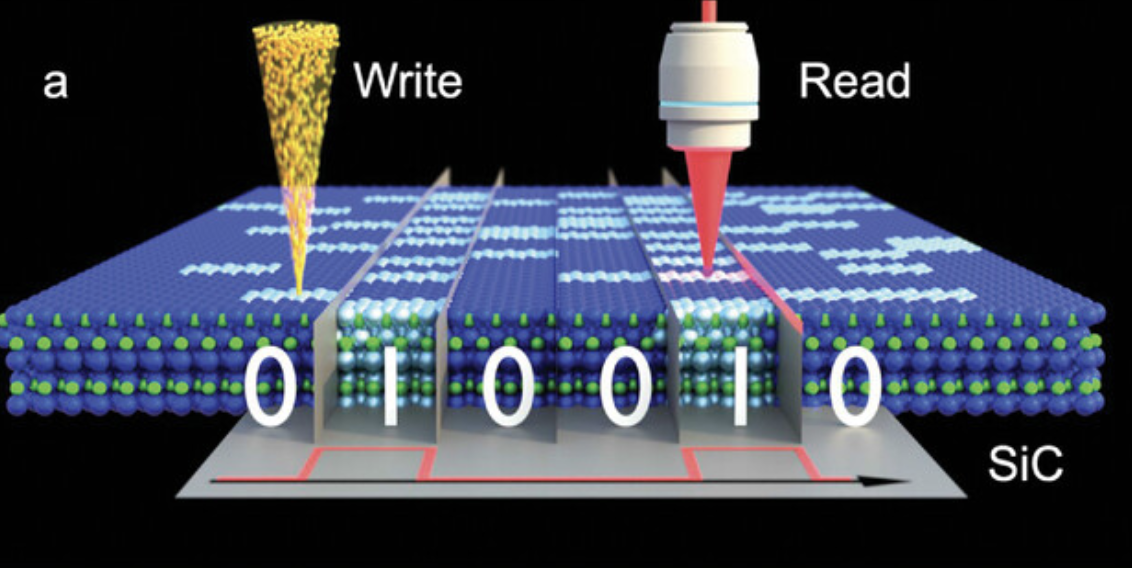An international research team led by the Helmholtz-Zentrum Dresden-Rossendorf (HZDR) has proposed a new concept for long-term data storage using atomic-scale defects in silicon carbide, a semiconducting material. The team, which includes researchers from Julius-Maximilian University Würzburg, Jet Propulsion Laboratory, California Institute of Technology, National Institutes for Quantum Science and Technology, and Tohoku University, suggests that this method could provide higher storage densities and secure long-term data archiving. The defects are created by a focused ion beam, offering high spatial resolution, fast writing speed, and low energy for storing a single bit.
The Challenge of Data Storage in the Digital Age
The digital age has brought with it an explosion of data. With the advent of the internet, social media, and cloud computing, the amount of data generated worldwide on a daily basis is staggering. Current estimates suggest that around 330 million terabytes of new data are created each day, with 90 percent of the world’s data generated in the last two years alone. This rapid growth in data creation presents a significant challenge for data storage technologies. Traditional storage devices are limited in their capacity and longevity, necessitating frequent data migration to avoid loss. This process is not only time-consuming but also energy-intensive.
Dr. Georgy Astakhov from the Institute of Ion Beam Physics and Materials Research at the Helmholtz-Zentrum Dresden-Rossendorf (HZDR) highlights the limitations of current storage media, stating, “The limited storage time of current storage media requires data migration within several years to avoid any data loss. Besides of being trapped in perpetual data migration procedures, this substantially increases the energy consumption, because a significant amount of energy is consumed in the process.”
A New Approach to Long-Term Data Storage
In response to this challenge, an international research team led by HZDR has proposed a new concept for long-term data storage. This approach is based on atomic-scale defects in silicon carbide, a semiconducting material. These defects are created by a focused ion beam, which offers high spatial resolution, fast writing speed, and low energy consumption for storing a single bit of data.
Silicon carbide features atomic-scale defects, particularly the absence of silicon atoms in the lattice site. These defects are created by a focused proton or helium ion beam, providing high spatial resolution, fast writing speed, and low energy for storing a single bit. Astakhov explains, “The diffraction limit of storage density inherent to optical media applies as well in our case. We overcome it by 4D encoding schemes. Here, the three spatial dimensions and an additional fourth intensity dimension are realized by controlling the lateral position and depth as well as the number of defects.”
Reading and Writing Data with Luminescence Mechanisms
The data stored in these atomic-scale defects can be read using luminescence mechanisms associated with the defects. Astakhov elaborates, “Then we optically read out the stored data by means of photoluminescence provoked by optical excitation. Furthermore, the areal storage density can be significantly improved using focused electron-beam excitation causing observable cathodoluminescence.”
Longevity and Density of Data Storage
One of the key advantages of this new approach to data storage is its potential for longevity. The researchers suggest that the temperature-dependent deactivation of these defects could allow for a retention time of several generations under ambient conditions. In addition, the team has demonstrated that with near-infrared laser excitation, modern encoding techniques, and multi-layer data storage, they can achieve an areal storage density comparable to that of Blu-ray discs. By switching to electron-beam excitation for data read-out, they can achieve a storage density comparable to the currently reported record for a prototype magnetic tape.
Collaborative Research and Future Applications
This research was a collaborative effort involving scientists from Julius-Maximilian University Würzburg (Germany), Jet Propulsion Laboratory, California Institute of Technology (USA), National Institutes for Quantum Science and Technology (Japan), and Tohoku University (Japan). The team’s conceptual approach is not limited to silicon carbide and can be extended to other materials with optically active defects, including 2D materials. This opens up exciting possibilities for the future of data storage, offering a potential solution to the challenges posed by the rapid growth of data in the digital age.
External Link: Click Here For More

